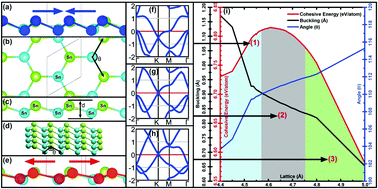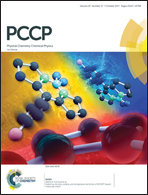Tuning the electronic structure in stanene/graphene bilayers using strain and gas adsorption
Abstract
Epitaxial growth of stanene monolayers on graphene substrates is an attractive synthesis route for atomically-thin electronic components, however, it remains unclear how such composites will tolerate lattice strain and exposure to ambient atmosphere. Using density functional theory, we identified several epitaxial configurations for the stanene–graphene bilayer system and determined the effect of strain and water adsorption. In addition to previously reported co-aligned bilayers, we identify a second family of low energy structures involving rotation of one layer by thirty degrees. The band structures of the rotated configurations exhibit a fully metallic interface, whereas the co-aligned structures are poised at the transition between semimetallic and semiconductor characteristics. In general, the electronic states are directly correlated with differences in the buckling parameter of the tin layer assigned to the competition between sp2 and sp3 hybridization schemes. This can be controlled by strain to yield a metal-insulator transition in special circumstances. For the equilibrium structure, H2O preferentially adsorbs on the stanene layer, and the system remains metallic with a mixture of Dirac and parabolic bands at the Fermi surface.



 Please wait while we load your content...
Please wait while we load your content...